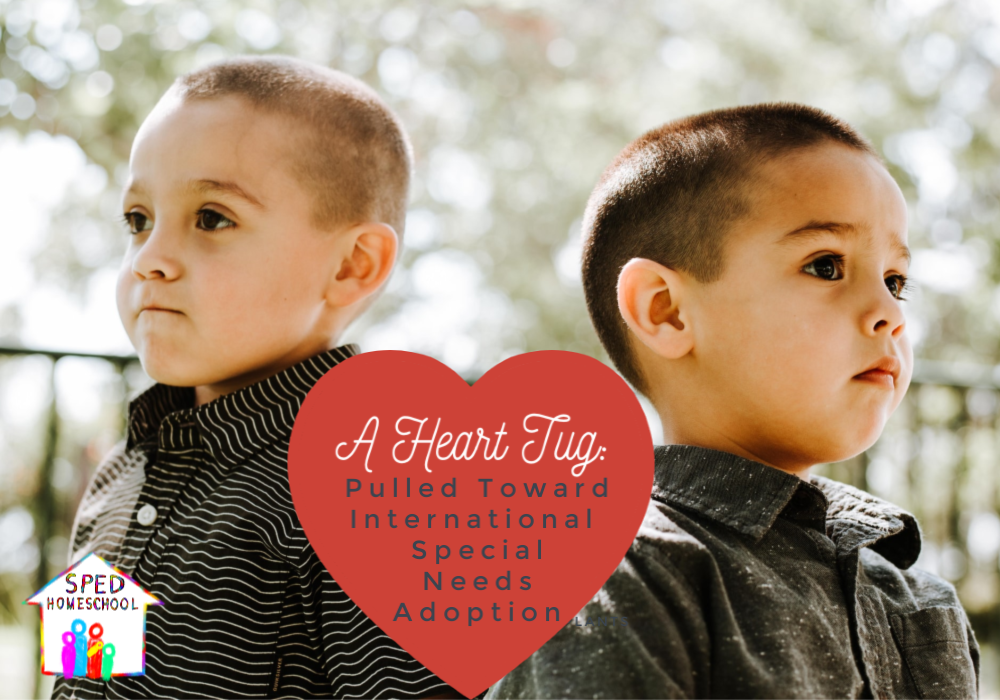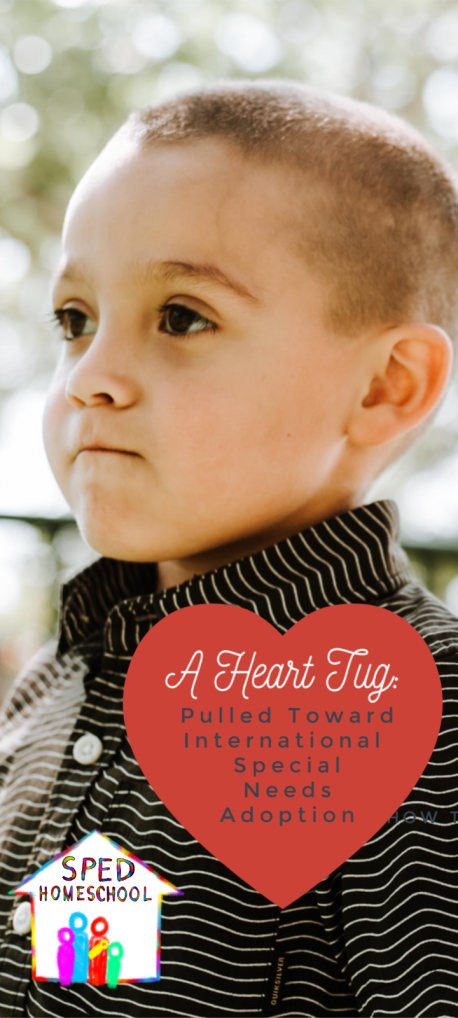
Shannon Ramiro
Recently I had the privilege of interviewing a friend of mine, Karrie Cannell, about her international special needs adoptions. I hope you enjoy her story as well as the insight she has to share with other families who may be thinking of adopting a child with a disability from another country.
What led your family to do an international adoption?
One morning I was online and came across a little boy’s picture that was listed for adoption. I had never thought about adoption, we had 8 children, so it wasn’t even on my mind. I kept going back to his picture. He had the same skin condition, epidermolysis bullosa (EB for short) as my stepdaughter. I knew I could care for him. I talked to my husband and we talked to our kids, and we all prayed about it. The next thing we knew, we were knee-deep in adoption paperwork.
About halfway through the adoption process, we found out the boy we were looking to adopt had a biological brother with the same skin condition. They had been separated 3 years before. We immediately decided to adopt both boys. About 7 years later we adopted again, and it happened about the same way. Someone knew we had kids with EB and shared a little girl’s picture with me. At first, I was just advocating for her family to come forward. Little did I know I was going to be her momma.
Were there language barriers before, during and after the adoption? How did you navigate them?
We didn’t speak Ukrainian and the boys didn’t speak English. We used Google translate at first, but once they were immersed in the English language they picked it up very fast.
With our daughter, we didn’t use Google translate. She was adopted at a much younger age than the boys. Since she was only 3, we just pointed to things and slowly repeated ourselves, speaking to her in English. She picked up English even quicker than the boys did. Looking back, I can see some frustrations when they couldn’t understand or tell us what their needs were, but we didn’t quit. Honestly, it wasn’t terribly hard.
What has been the most enjoyable part of being a foster/adoptive family?
It’s different with each child. The boys have significant delays caused by the lack of care from their biological mother and the orphanage. Getting them home and giving them better care all around is my greatest joy. Seeing them enjoy life and experience things for the first time is also a great joy.
For our daughter, she also lived in an orphanage but doesn’t have the mental delays like the boys. She was very young when she came home, so the transition was easier and she was happier. Her joy is infectious and she loves being in our family.
“I can see some frustrations when they couldn’t understand or tell us what their needs were, but we didn’t quit.”
What was the most challenging part of your international adoption?
The biggest challenge was probably getting the boys the mental help they need. Finding someone who specializes in Reactive Attachment Disorder (RAD) and Fetal Alcohol Syndrome (FAS) and truly knowing how to help us was our biggest issue, and still is. It’s been a tough road with the boys, a journey I never knew I needed to be on, but I am so blessed to be where I am at with them.
What specific learning challenges have you encountered with your foster/adopted child(ren)? What resources have you found the most helpful in these situations?
Mental health resources have been our biggest challenge. As the boys get older we have found what works for them and what doesn’t.
What advice do you have for families who are thinking about looking into an international adoption?
I wish we were more informed, educated, and better equipped to help the boys with their mental health issues. There needs to be more resources to help families that are struggling. More respite. More knowledge. More information when you feel alone and lost and feel like you have nowhere to turn.
Did you benefit from this article?
Would you consider a small donation to support the ongoing work of SPED Homeschool?
Click Here to Donate Today

